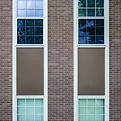Consulting Services
Dr. Heineke supports schools and districts in building capacity for multilingual learners with a multilayered approach that involves bolstering programming, curriculum, and instruction.

Strengthening Programs, Structures, and Services
Begin with in-depth analysis of current programming, structures, and services for multilingual learners. Learn how to refine and enhance programming at the macro level to better respond to students, families, communities while following the latest research and language policies.

Designing Curricula and Curricular Materials
Review literacy and content curricula with a language lens to determine if and how multilingual learners have access to grade-level learning and language development. Learn ways to refine and enhance curriculum to simultaneously nurture language and disciplinary learning.

Providing Aligned Professional Learning
Offer goal-focused, backward-designed professional learning sessions to build educators' capacity to support multilingual learners. Develop structures to encourage transfer and sustain this work in classrooms following professional development sessions to promote students' learning.
Current Efforts in Schools
Dr. Heineke currently supports various school districts across the country. Responding to the unique contexts, goals, and needs of each district, she designs and implements comprehensive plans to build capacity for multilingual learners.

Supporting Language Development in High Schools
Pennsylvania recently began tracking multilingual learners’ annual growth in English proficiency as measured by ACCESS scores. This new metric attached to school district reports has prompted administrators to critically consider their programming, curriculum, and instruction for multilingual learners. Dr. Heineke has been working with various Pennsylvania districts to develop co-teaching models for content and ESL teachers, paired with professional development to support teachers in collaboratively developing and implementing curriculum with a language lens that supports multilingual learners’ learning and language development across the school day and building.


Building Systems and Capacity in Elementary Schools
Multilingual learners are on the rise in urban, suburban, and small-town contexts across the United States, including an increase in newcomers from Central and South America. Rising numbers and changing needs has sparked leaders in one Illinois school network to reconsider its approach to educating multilingual learners. Dr. Heineke has been supporting leaders in shifting from pull-out ESL to inclusive bilingual and co-teaching models. She has also been partnering with the network’s bilingual program leader to develop and facilitate professional development for ESL, bilingual, and general education teachers to support the larger programmatic shifts to serve multilingual learners.
Understanding by Design with Language Lens
Many districts have program models in place that fit their community’s needs but want to enhance the curriculum and instruction provided within those programs. As districts and schools seek to provide multilingual learners with equitable access to grade-level learning, educators are rethinking how ESL/ELD curriculum can better align with disciplinary learning standards and classrooms. In partnership with Jay McTighe’s consulting group, McTighe & Associates, Dr. Heineke has recently worked with educators in Colorado, Georgia, Illinois, Minnesota, Oregon, Pennsylvania, and Texas to develop ESL/ELD and content curricula with a language lens.
